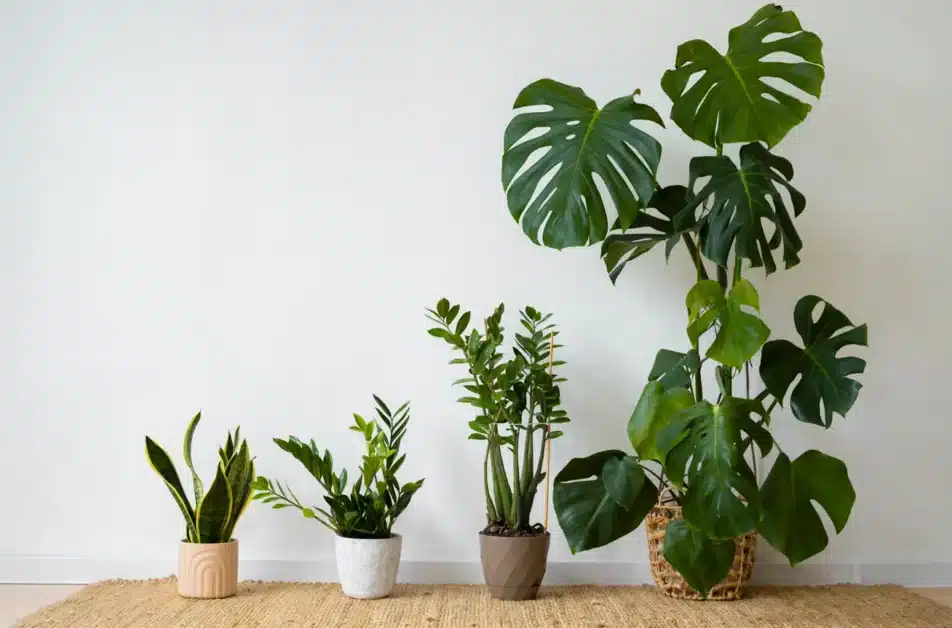Keeping indoor plants healthy and vibrant year-round requires more than just water and sunlight. Choosing the right indoor plant fertilizer plays a crucial role in supporting lush foliage, strong roots, and resilient growth. In this guide, we’ll compare organic and synthetic indoor plant fertilizer options, discuss their components, performance, environmental impact, and cost—while subtly integrating high-quality solutions like YaraFert products for enhanced plant nutrition.
Benefits of Using Organic Indoor Plant Fertilizer
Organic indoor plant fertilizer is derived from natural sources such as compost, bone meal, fish emulsion, and seaweed extracts. It supports sustainable gardening practices while enhancing soil structure and microbial activity.
Here are the top advantages of using organic indoor plant fertilizer:
- Improves Soil Health: Enhances microbial diversity and promotes long-term soil fertility.
- Slow-Release Nutrients: Provides steady, non-toxic nutrient release that minimizes the risk of over-fertilization.
- Safe for Indoor Use: Reduces the risk of harmful chemical buildup, making it safer for pets and children.
- Environmentally Friendly: Low ecological footprint due to renewable and biodegradable sources.
YaraFert’s Ugarit 10-0-5 + 70% Organic Matter delivers rich nitrogen and potassium content with humic and fulvic acids for optimized nutrient uptake. Ideal for container plants, this granular formulation enhances root health and soil conditioning.
Common Components in Synthetic Indoor Plant Fertilizer
Synthetic indoor plant fertilizers are manufactured from mineral salts and chemical compounds, offering fast, targeted nutrition. They are ideal for quick greening and correcting deficiencies in indoor environments.
Key components typically found in synthetic indoor plant fertilizer include:
- Nitrogen (N): Promotes leafy growth and chlorophyll production.
- Phosphorus (P?O?): Supports root development and flowering.
- Potassium (K?O): Enhances water regulation and disease resistance.
- Micronutrients: Iron (Fe), Zinc (Zn), Boron (B), Magnesium (Mg), Manganese (Mn), and Copper (Cu) improve plant metabolism.
Yarafert’s SULFOMIX is a suspension fertilizer packed with 6% iron, 3% zinc, and 11% sulfur—perfect for micronutrient-deficient houseplants. Similarly, CALCIMAG, rich in calcium and magnesium, strengthens plant cell walls and enhances color vibrancy.
READ MORE: How Indoor Plant Fertilizer Works: The Science Behind It
Performance Comparison: Organic vs Synthetic Indoor Plant Fertilizer

When comparing performance, organic and synthetic indoor plant fertilizers each have strengths depending on plant type, growth stage, and user preference.
| Feature | Organic Fertilizer | Synthetic Fertilizer |
|---|---|---|
| Nutrient Release | Slow, consistent | Fast, immediate |
| Longevity | Long-term soil improvement | Quick but short-lived boost |
| Risk of Burn | Minimal | Moderate to high if misapplied |
| Soil Microbes | Supports microbial activity | May reduce microbial diversity |
| Best For | Long-term growth and soil health | Quick corrections and rapid greening |
For indoor plants experiencing nutrient shock or quick decline, fast-acting solutions like Ugarit 27-27-27 + TE or Ugarit 40-10-10 + TE deliver balanced, rapid nutrition. These suspensions are ideal for mid-season supplementation.
READ MORE: What Is Indoor Plant Fertilizer? A Beginner’s Guide
Environmental Impact of Indoor Plant Fertilizer Types
Indoor plant fertilizer choice can influence not only plant health but also environmental sustainability. Organic fertilizers tend to have a lower environmental impact due to their renewable origins.
Environmental considerations for each fertilizer type:
- Organic Fertilizers:
- Derived from waste or renewable resources
- Promote biodiversity
- Lower risk of waterway pollution
- Synthetic Fertilizers:
- Higher energy consumption during production
- Risk of salt buildup and leaching
- May disrupt indoor air quality if overused
Blending both types can be beneficial. For instance, using Biofast (a gel containing N-P-K 12-12-12, humic and fulvic acids) combines the benefits of synthetic immediacy with organic enrichment—supporting balanced, sustained growth.
Cost and Availability of Organic Indoor Plant Fertilizer Options

Cost is often a deciding factor when selecting an indoor plant fertilizer. Organic options are generally more expensive due to production and sourcing, while synthetic fertilizers offer affordability and accessibility.
A breakdown of cost and availability factors:
- Organic Indoor Plant Fertilizers:
- Often priced higher due to natural sourcing and processing
- Less concentrated, requiring larger application volumes
- Increasing availability through eco-conscious brands
- Synthetic Indoor Plant Fertilizers:
- Affordable and highly concentrated
- Widely available in garden centers and online
- Packaged in compact forms suitable for small spaces
Yarafert’s Ugarit Multi (30% K?O, 32% sulfur, 10% calcium) offers excellent value by combining key macronutrients and secondary nutrients in one product—ideal for urban gardeners seeking efficiency.
READ MORE: Choosing the Best Potting Soil for Indoor Plants
Final Thoughts: Which Indoor Plant Fertilizer Should You Choose?
Both organic and synthetic indoor plant fertilizers offer distinct advantages. Organic options enhance soil health and sustainability, while synthetic formulas provide precision feeding and faster results. The best strategy often lies in combining the two.
Consider your plant types, growth goals, and environmental values. For long-term care and soil vitality, opt for organic-based solutions like Ugarit 10-0-5 + Organic Matter. For quick interventions or nutrient-deficiency corrections, rely on specialized formulations like SULFOMIX, Biofast, or CALCIMAG.
Ready to Feed Your Indoor Plants the Right Way?
Whether you’re nurturing succulents, ferns, or flowering houseplants, choosing the right indoor plant fertilizer is essential for success. Explore our premium range of YaraFert and Ugarit solutions tailored for indoor plant care.
?? Contact our expert team to receive a personalized fertilizer recommendation.
? Visit our product catalog to discover high-performance indoor plant fertilizer blends for every need.
? Start nourishing your plants today with nutrient-rich, scientifically balanced solutions that bring out their full potential.



